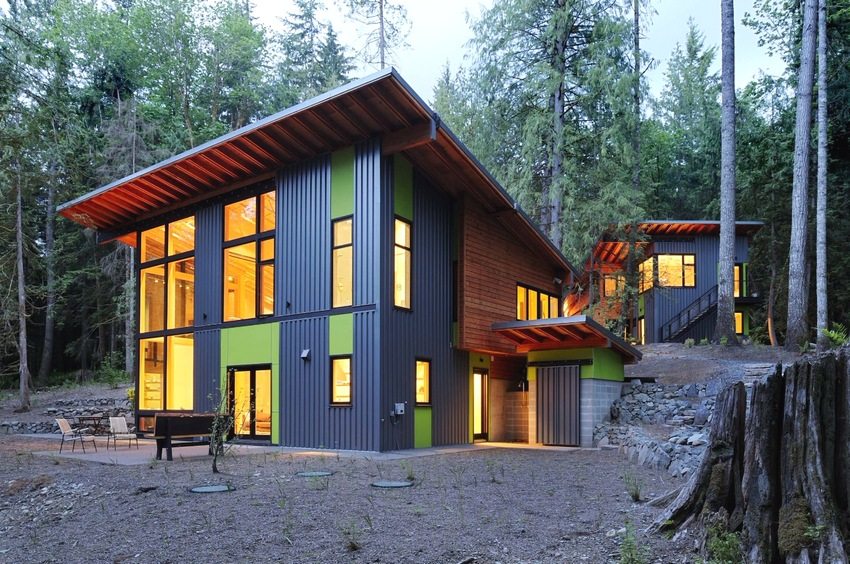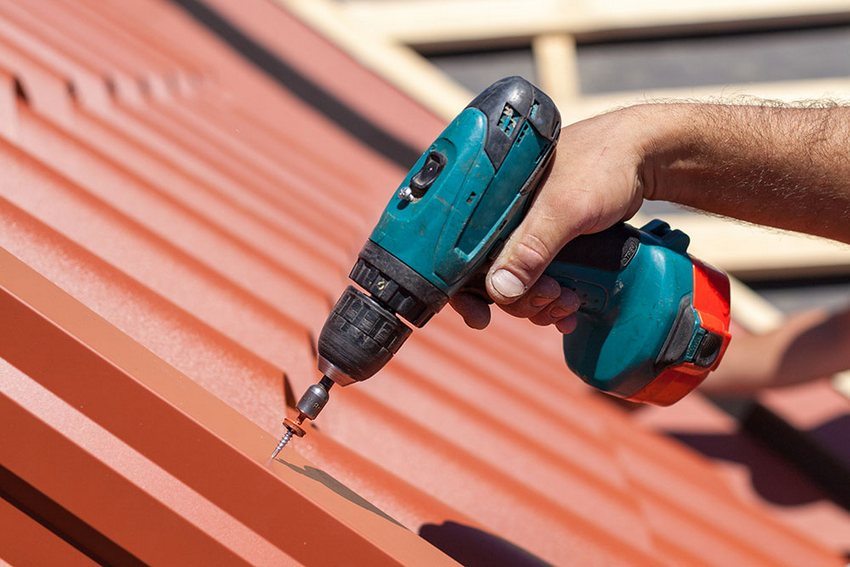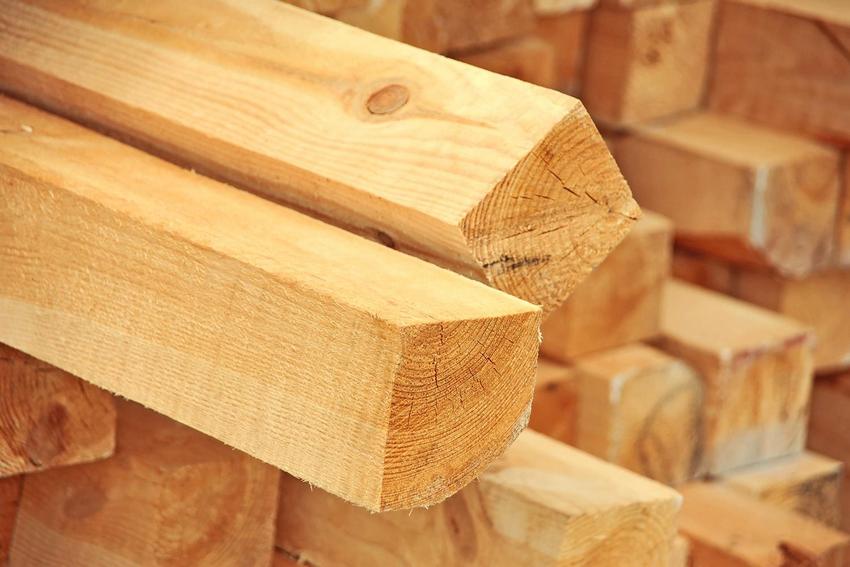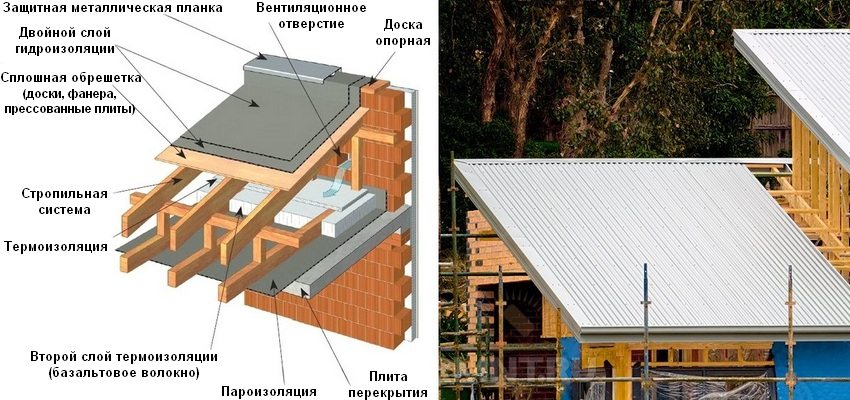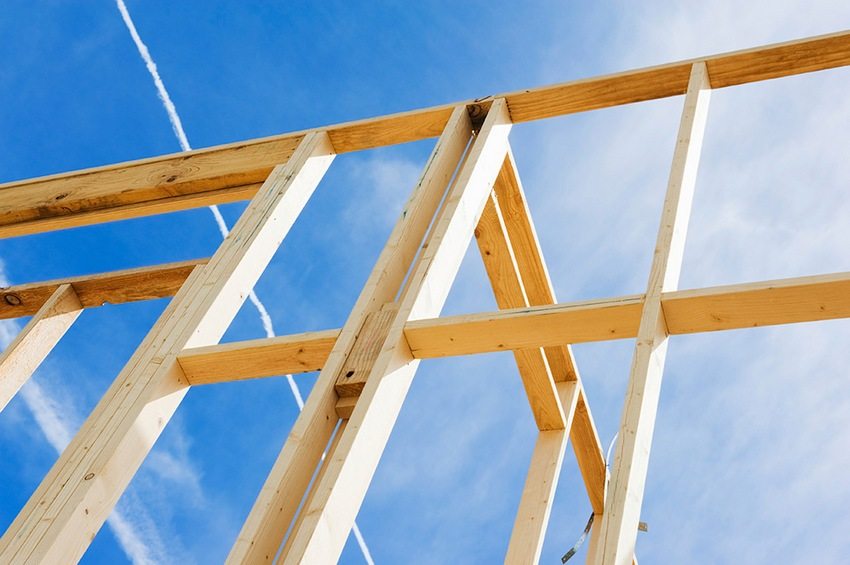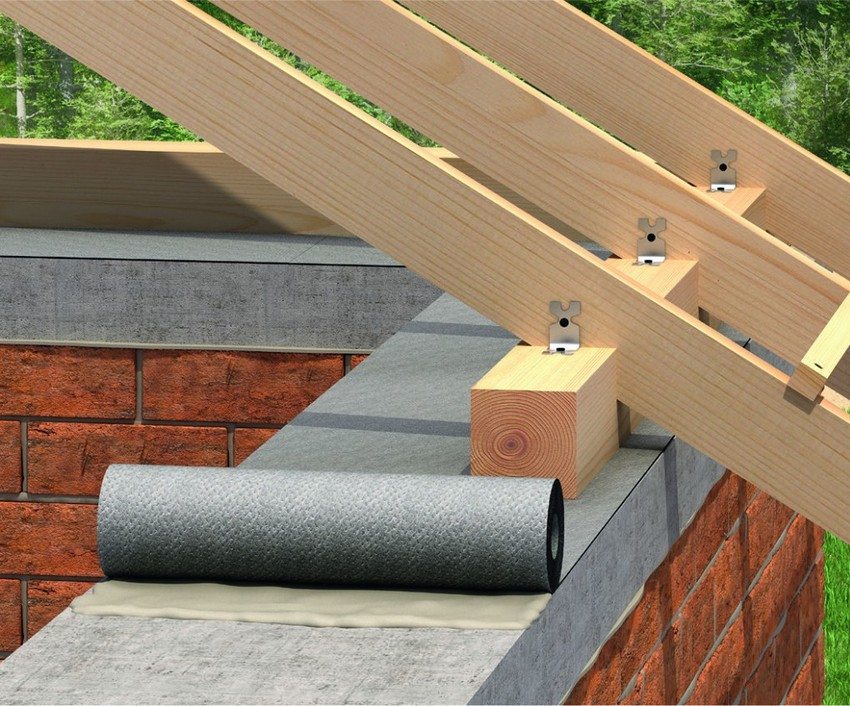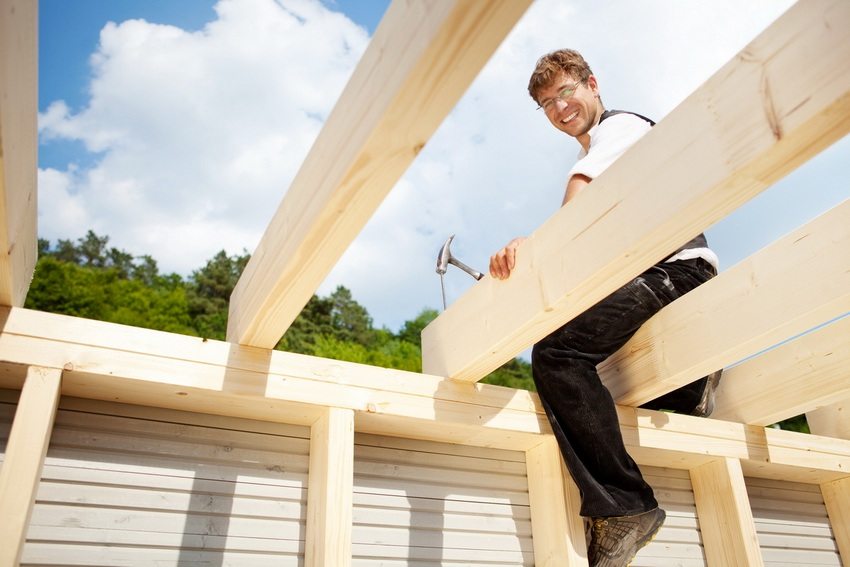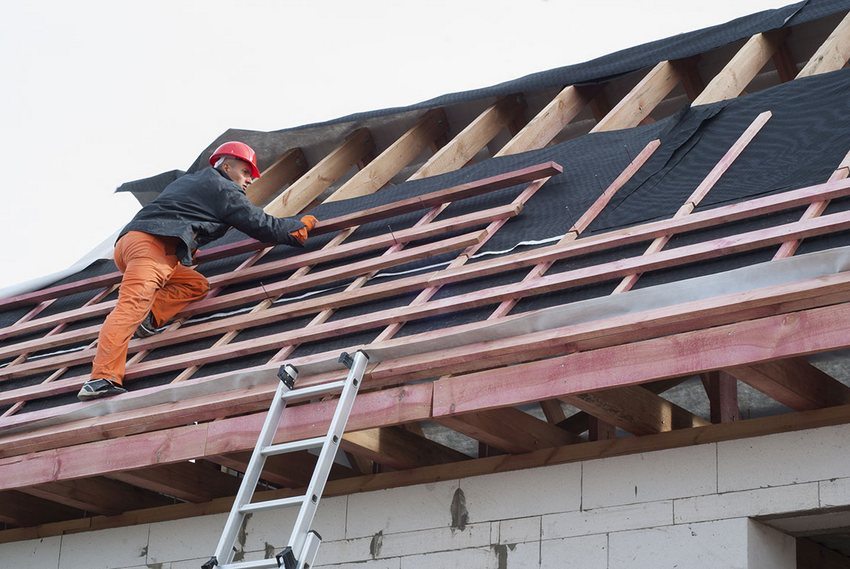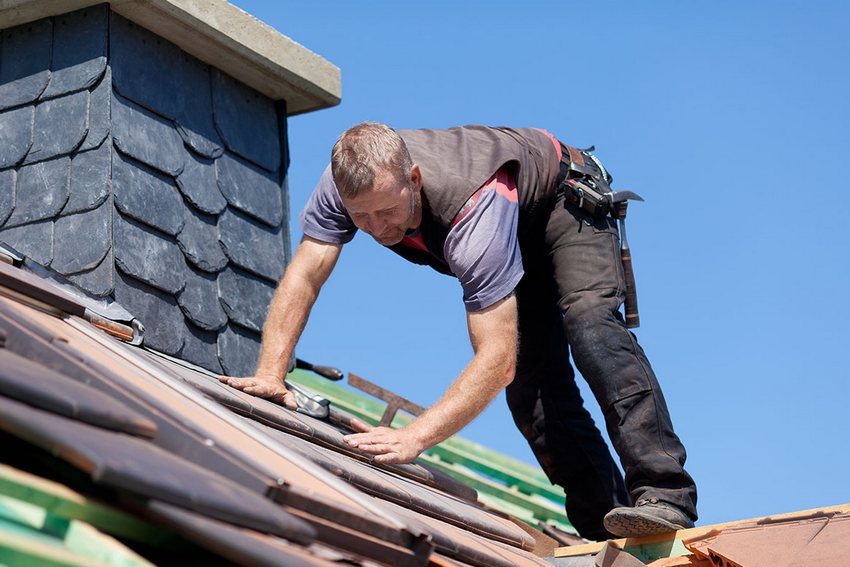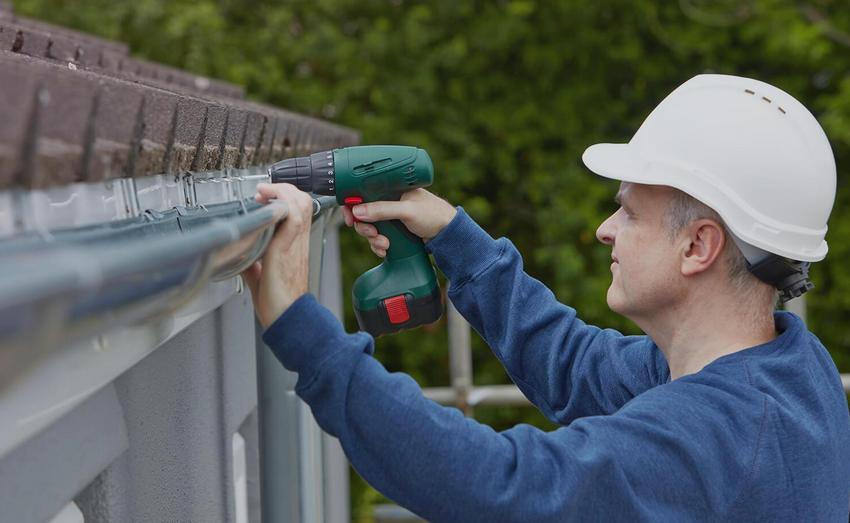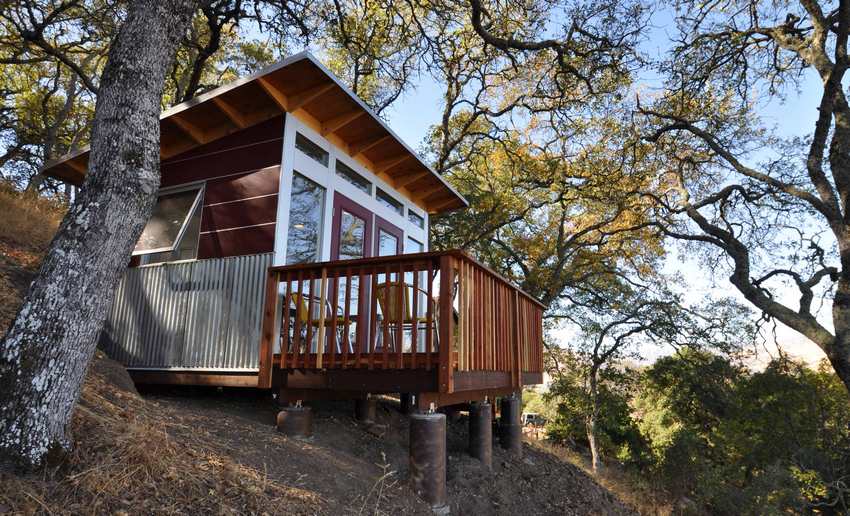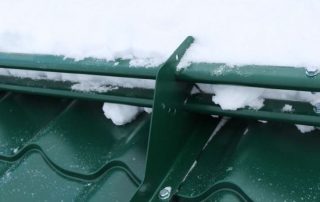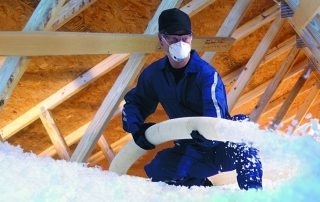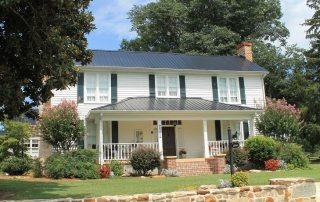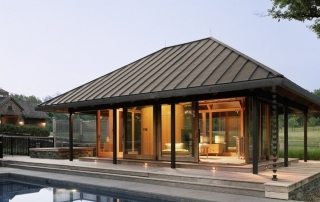These or those types of roofs are suitable for use in different conditions and for different types of buildings. The single-slope option is not only cost effective, but also quite versatile. This type of roof is suitable for a residential building, outbuilding, garage and other structures. Installation of the structure is easy to do on your own: there are enough materials in the network that consider how a single-pitched roof can be built with your own hands step by step.

A pitched roof is an economical and versatile design option suitable for both residential buildings and outbuildings
Content [Hide]
- 1 Advantages and disadvantages of a pitched roof
- 2 How to make a pitched roof: the choice of material and its preparation
- 3 Necessary tools for work
- 4 Shed roof device: calculation of the amount of materials
- 5 Do-it-yourself shed roof step by step: installation procedure and its features
- 6 Maintenance of the shed roof structure
Advantages and disadvantages of a pitched roof
As with any other type of roof structure, before installing a pitched roof, it is necessary to study the features of its operation, as well as the positive and negative aspects of just such a choice. The advantages of this design include the following points:
- the ability to use any roofing material. This is due to the fact that the value of the slope angle of a pitched roof can be minimal, that is, it can be completely flat;
- less windage due to the presence of one slope, not two. This type of construction can be used even in very windy areas;
- ease of installation and operation. A pitched roof can be easily built with your own hands;
- relatively low weight of the structure compared to other types;
- slopes can be placed on several floors, thus creating a complex and original structure in terms of design;
- when building a shed roof with your own hands, you save not only materials, but also time and money;
- this type of construction avoids the slope of water to one side of the house.
In addition, an attic can be arranged under a roof structure with one slope, although it will be smaller than under a gable roof. If we talk about the shortcomings, then we can highlight the following:
- the appearance is slightly less attractive than that of the gable structure. This disadvantage can be easily compensated for with a good design imagination;
- if you are building a structure with a small angle of inclination, then the attic area will be very small.
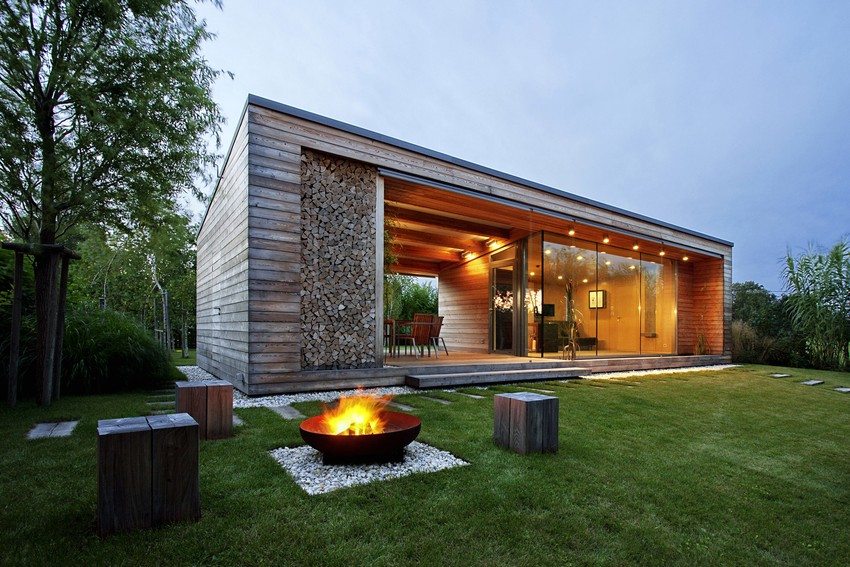
Installation of a pitched roof is quite simple and will not cause difficulties even for novice builders
This is where the disadvantages of a single slope design end. As you can see, there are many more advantages, which is why such a roof is very popular in various types of buildings.
How to make a pitched roof: the choice of material and its preparation
Correctly selected material is the basis for the reliability and durability of any building structure. In the case of a roof, you will need the following materials:
- timber or logs. Of them are mounted rafter system, as well as beams and mauerlat. Therefore, great attention must be paid to the quality of the wood. It is best if the moisture content of the tree does not exceed 20%, and from the species it is worth choosing larch or other conifers. The cross-section of the timber is selected depending on the size of the structure and its weight. In any case, the diameter of the timber should be at least 100 mm, and the section of the log should be equal to 120x120 mm. In order for the wood to better resist the processes of decay, damage by parasites and other negative influences, it is recommended to treat it with special impregnations - this will significantly extend the service life of the entire structure;
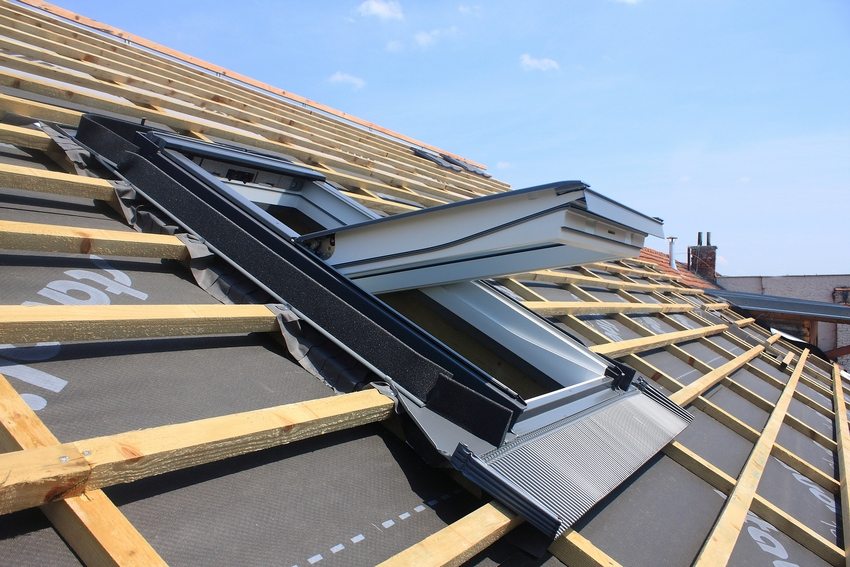
If you plan to equip the attic, it is necessary to allocate space for the window in the structure of the crate
Helpful advice! If you choose between a regular timber and a glued one, the latter should be preferred, as it boasts higher performance characteristics.
- timber or boards for mounting the lathing. Here, the quality of the material may be slightly lower than for the rafters. The main thing is that it is dry and without a lot of knots. The thickness of the boards in this case depends on the type of material with which you will insulate the roof;
- edged boards for the installation of the end plate. In the event that a metal tile is used as a covering, the boards can be replaced with a special additional element;
- fastening materials. To fasten the rafters of a pitched roof and its other elements, it is necessary to use nails, anchor bolts and self-tapping screws. If you are installing the roof in places with strong wind loads, two different types of fasteners can be used in the same place to increase the level of strength;
- insulation. Serves for thermal insulation of the structure;
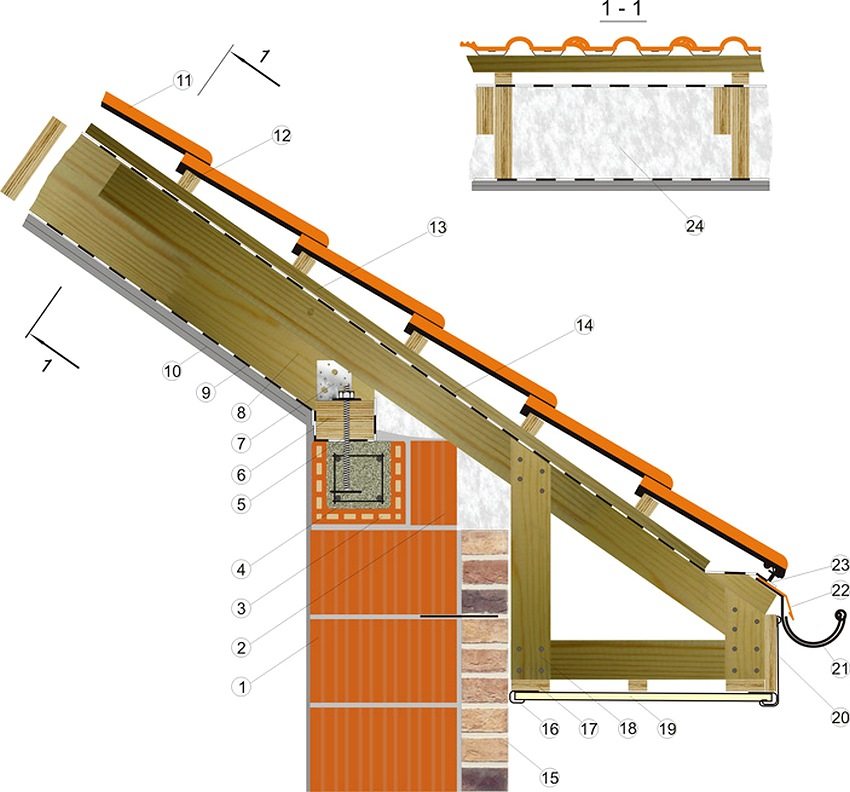
Diagram of the Mauerlat attachment point to the wall made of ceramic blocks: 1 - porous ceramic block; 2 - additional block, if the thickness of the load-bearing wall is 38 cm; 3 - U-shaped profile block; 4 - reinforcement cage (fiberglass reinforcement can be used); 5 - M10 threaded rod embedded in concrete, installed with a step of 1 m; 6 - Mauerlat timber with a section of 100x150 mm; 7 - fastening perforated galvanized corner 100x100 mm; 8 - rafter 50x200 mm; 9 - vapor barrier film; 10 - ceiling filing OSB sheet 10 mm; 11 - ceramic tiles; 12 - lathing 45x45 mm; 13 - counter rail 30x50 mm; 14 - hydro and windproof membrane; 15 - facing brick; 16 - J-rail for filing the eaves; 17 - board for tying the eaves box 30x100 mm; 18 - eaves box board 30x100 mm; 19 - perforated eaves overhang panel; 20 - fascina; 21 - gutter of the drainage system; 22 - dropper; 23 - end tile; 24 - thermal insulation material (mineral wool)
- steam and waterproofing materials;
- the roofing material itself. It all depends on the climate in which the roof will be used, as well as on your financial capabilities and personal preferences. Please note that the answer to the question of how to build a pitched roof with your own hands in stages depends in part on what kind of roofing material you choose for the structure.
Necessary tools for work
In addition to the building materials described above, in order to make a pitched roof with your own hands properly, you will need the following set of tools:
- hammer and ax;
- building level;
- tape measure and ruler;
- hacksaw and construction knife;
- construction stapler with a supply of staples;
- pencil or marker.
In addition, if you plan to apply a special antiseptic impregnation to the wood, you will need a brush or roller, as well as the impregnation itself.
Shed roof device: calculation of the amount of materials
Determining exactly how much one or another material is needed for installing a roof structure can be quite difficult. Therefore, this question can be entrusted to experienced specialists, or at least use one of the special construction calculators. The latter can be found in large numbers on the Internet on specialized resources, so this should not be a problem.
If we are talking about a bar, its number and section depend on the parameters of the slope. The length of the rafters of a single-pitched roof determines the height and length of the timber, and the distance between the rafter legs should be within 0.6-1 m. The thinner the timber, the closer the rafters should be installed to each other.
The number of boards and their total length depends on the type of roofing material you choose. For metal tiles the pitch of the lathing is approximately 300 mm, and for slate - 440 mm. If you plan to arrange a flexible roof, the step can be arbitrary due to the special laying technology. Each type of roofing material has its own individual installation requirements that must be adhered to. Otherwise, the manufacturer of the material cannot guarantee the efficiency of its use.
The amount of materials for the wind board is equal to the total perimeter of the ramp minus its lower part, which will be covered by the cornice. The amount of insulation material is equal to the area of the ramp. If you are going to install insulation in several layers, the roof area must be multiplied by their number.
Helpful advice! It is recommended to use at least two layers of insulation, which must be staggered. This will allow you to avoid the risk of so-called cold bridges.
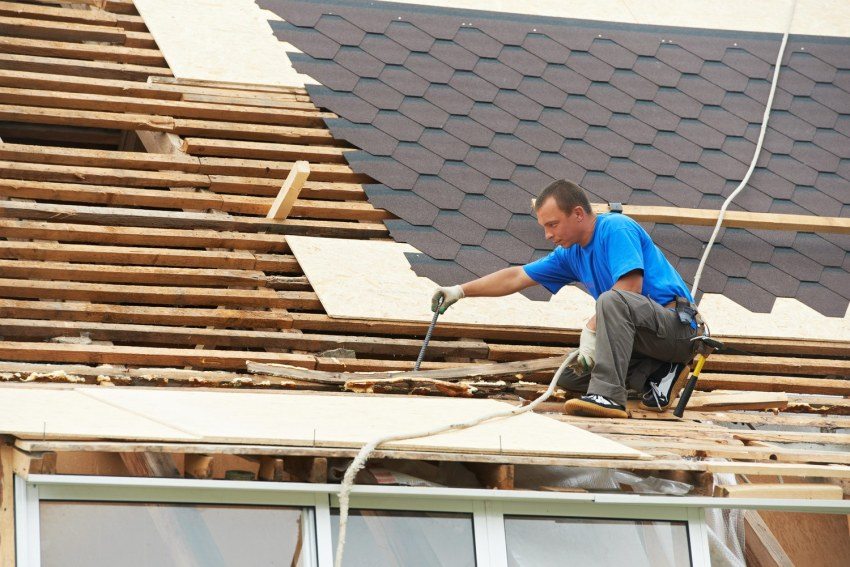
When installing the roofing, it is necessary to adhere to the technology recommended by the manufacturer of the selected material
The amount of roofing material depends not only on the area of the slope, but also on the angle of its inclination. The latter depends on the characteristics of the area in which your house stands. For example, if you are building a roof on a plain, the slope should be more gentle so that the wind blows away snow and debris freely. But if trees are located around the house that slow down the air flow, it is more logical to increase the angle of inclination so that the snow and water flow down on their own.
The optimum slope for a pitched roof is 20 °. In this case, you can mount the roof from any popular materials: slate, tiles, corrugated board, folding, etc. At the same time, you get the minimum level of wind load, which is very important in areas with strong winds. And if the angle of inclination is 45 °, the area of the slope will be 1.5 times larger than that of a flat roof.
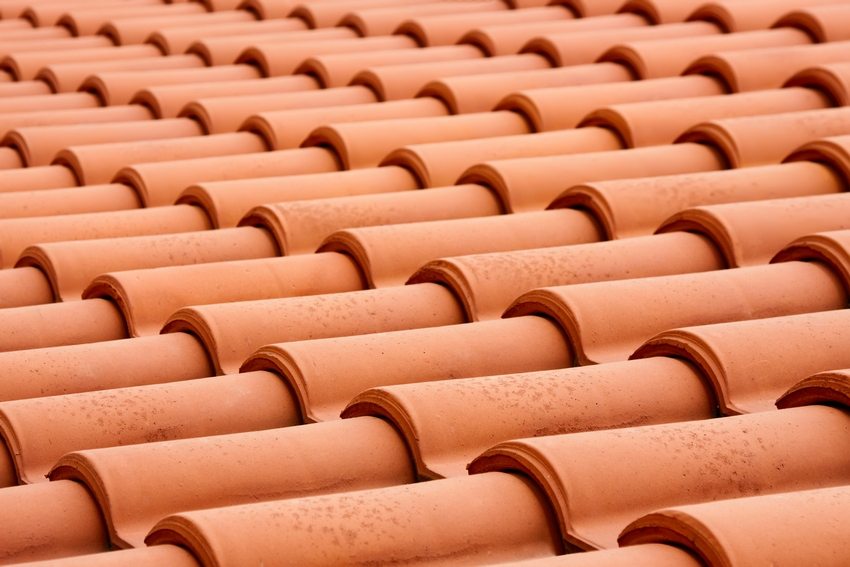
The amount of material required to cover the roof depends on the area of the roof and the angle of its slope
In addition, for some of the roofing material options, there are requirements for the maximum angle of inclination. What is the slope of a pitched roof on which roll roofing is used? No more than 10 °. For slate, this parameter should not exceed 20 °, and folding or shingles can be used up to an angle of 35 °.
You also need to pay attention to the smoothness of the material. The more smooth it is, the less you need the angle of inclination of the pitched roof. The calculation is based on considerations of how easy snow and various debris will slide off the roof.
Related article:
Do-it-yourself shed roof: drawings and photos, types of roofing materials. How to choose the right material. Calculation of the slope angle.The advantages and disadvantages of various roofing materials.
Do-it-yourself shed roof step by step: installation procedure and its features
In order to properly erect the roof, you, first of all, need drawings indicating all sizes and parameters. You can make such drawings yourself, download a ready-made version from the Internet (of course, taking into account the parameters of your construction), or order them from professional builders. After the drawings are ready and the building materials are purchased, you can proceed directly to the installation of the structure.
It is very important to decide whether your roof will be ventilated or unventilated. The first design option is mounted in residential premises and baths to ensure a comfortable microclimate. Ventilation in this case is achieved due to the gap between the layers of insulating material, as well as special holes located on the sides of the roof. To ensure that the ventilation efficiency does not decrease in winter, the roof must be regularly cleaned of snow.
Non-ventilated construction - an option for terraces, warehouses and other similar premises. It is characterized by a small angle of inclination and ease of installation.
Installing a shed roof truss system
If we talk about rafters, then there are two popular options for their installation:
- Do-it-yourself installation of a shed roof rafter system on walls located at different levels of the building. This option is more economical in terms of money, since less lumber is used. But it should also be borne in mind that in this case, the load-bearing wall must be raised to the height of the roof, so that the upper part of the rafter leg can be resting on it. Naturally, rafters for a completely flat roof cannot be mounted in this way.
- Installation of a triangular truss, which will combine rafters, beams and racks in its structure. At the same time, there is no need to build up load-bearing walls, but the consumption of wood is much higher than in the first option. On the other hand, the truss can be ground mounted, which greatly simplifies the installation process. A single-pitched roof rafter system already made according to this scheme must be raised to the required height using winches and other specialized devices.
Your choice of one way or another of how to mount the rafters on a pitched roof will not affect its service life or the quality of installation, so this issue depends only on personal preference.
To install the rafter legs, you must use special additional supports or struts. Their number and place of installation depends on the following factors:
- slope angle;
- the weight of an individual rafter leg;
- the distance between the junction of the roof and the wall;
- leg length;
- type of roofing material;
- the type of material with which thermal insulation is carried out.
After the shed roof rafters have been installed, it is necessary to evenly distribute the load on the load-bearing walls. For this, a Mauerlat is used.
Subtleties of Mauerlat installation
Mauerlat is an additional roof element on which the lower edge of the rafter leg rests. It is attached to the load-bearing wall or mounted between the beams of the rafter system. The material from which the Mauerlat is made depends on the material of the bearing walls.
If in your construction the supporting walls are made of bricks, then it is recommended to use annealed wire for the Mauerlat, but for walls made of porous material - reinforcement, the length of which is 2/3 of the width of the foam block. If you are mounting a support for a rafter system in a house made of wooden beams, anchor bolts are used as a Mauerlat.
Helpful advice! Mauerlat may be exposed to moisture. In order to extend its service life and avoid corrosion, it is necessary to put it on a waterproofing material such as roofing felt.
Installation of floor beams and rafter legs
In addition to the Mauerlat, the device of the shed roof rafter system may imply the installation of floor beams on which the rafter leg will rest. In this case, the step of mounting the beam should be equal to the step of mounting the rafters. Regardless of whether a beam system is present in your design or not, the leg is attached to the Mauerlat by means of a saw. In this case, the size of the gap between the leg and the Mauerlat should be minimal.
If the width of the span of the rafter system exceeds 4.5 m, then in order to avoid deflection of the beam, it is necessary to install rafter legs. The place where such a spacer is installed depends on the length of the span. When installing the rafters of a single-pitched roof with a large area, the installation of the rafter legs is mandatory, otherwise you risk that the beam will deform and break under the weight of the structure.
How to make a crate correctly
The lathing is a very important element of the roof, since it is on it that heat and waterproofing, as well as other insulating layers, are subsequently mounted. The pitch of the lathing depends on the design features of the pitched roof and the type of roofing material used. The sheathing board is attached to the rafter leg using ordinary nails.
It is also important that the lathing wood is dry, free of wormholes and a lot of knots. For greater reliability of the structure, it can be treated with special impregnations that will protect it from the harmful effects of moisture and parasites, and also reduce the level of flammability of wood.
If you are planning to equip an attic, it is necessary to allocate space for the attic window in the structure of the lathing. In this place, it is not necessary to make a crate, but it is necessary to mount a pair of horizontal jumpers in order for the window to be better attached. They must be made from the same material as the rafters on a pitched roof. How to make the window itself depends on your preference.
Roof insulation: work procedure
When installing a shed roof with your own hands, you can use any insulating material. The insulation itself is performed in the following order:
- Using a construction stapler, a layer of waterproofing material is attached to the crate. This must be done with an overlap.
- Then a layer of insulation is mounted.
- A counter-batten is installed, the purpose of which is to separate the insulation layer and the vapor barrier.
- The vapor barrier is laid.
If your roof is not flat, it is better to use soft materials for insulation. They are easier to install and fill voids better. When building a single-pitched roof with a minimum angle of inclination with your own hands, bulk insulation, for example, sawdust or expanded clay, will be more effective. They do not get wet even if water flows under the roofing material.
The most famous and common materials for roof insulation are mineral wool and polystyrene. In the case of using them or other popular materials for roof insulation, a layer 10 cm thick is usually enough, but for cold regions this parameter can be increased.
Laying roofing
This stage of constructing a shed roof with your own hands entirely depends on the type of roofing material you choose. Here you need to adhere as closely as possible to the technology recommended by the coating manufacturer.Detailed instructions can be found for any of the popular types of roofing materials if you are covering a pitched roof with your own hands: step-by-step videos, widely available on the web, will help you do the job efficiently.
After the roof covering has been installed, various additional elements can be installed on the roof. For example, weather vane, gutters, and so on. At this stage, you should focus solely on personal preferences.
General tips for installing a pitched roof
When building a pitched roof, the calculation of the direction of the slope should depend on which side the wind most often blows. If you install the ramp incorrectly, the roof can easily rip off. That is why it is not recommended to install a single-slope version in an area where strong winds often blow from different directions.
When calculating the rafter system, it is also necessary to take into account the climatic features of your region. The finished frame must evenly distribute the load, otherwise the roof may fail much earlier than expected. Load means not only wind, but also precipitation. The average annual amount of snow and rain must be taken into account. You can find out at your local meteorological center.

The building can be given an original and modern look by placing the roof slopes at different levels
When calculating the amount of roofing materials, it must be borne in mind that they will be overlapped. To obtain an accurate figure, the length of the overlap must be multiplied by the number of sheets of material and summed up with the roof area. If you want to know how to build a pitched roof in such a way that the material is used as efficiently as possible, be sure to consider this point.
Helpful advice! The smaller the distance between the rafters of a pitched roof, the more weight the roof structure can support. But it is also worth considering the fact that as the step decreases, the weight of the rafter system increases. And with too much weight of the latter, the walls of the building may not withstand it.
Maintenance of the shed roof structure
In order for your single-pitched roof to serve you as long as possible, and also to boast an attractive appearance, a high level of hydro and thermal insulation, and other performance characteristics, it is necessary to perform the following actions from time to time:
- inspection of the rafter system for parts damaged by moisture or parasites. If part of the rafters has suffered from excessive moisture, rodents or other adverse influences, then it must be replaced as soon as possible or at least treated with special compounds. Treatment with antiseptics makes sense only at the initial stage of the lesion, and in especially advanced cases you will have to completely change the rafter system by disassembling the roof for this. In order to prevent such an extreme, preventive examinations must be performed regularly;
- periodic cleaning of debris from the roof slope. Accumulating, it not only increases the load on the structure, but also makes it difficult for snow to melt in winter. If you do not clean the roof from branches and other debris in a timely manner, the coating runs the risk of failure;
- replacement of leaky sheets of roofing material. When it comes to shingles or slate, you can easily replace only a small part of the roof to restore its integrity. Please note that if the roof has failed in places, most likely you will have to change not only the top layer, but also the crate with insulating layers. Otherwise, you risk getting a significant deterioration in the heat and waterproofing properties of the entire structure.
Remember that with proper care, a pitched roof will last as long as possible, regardless of your region or the type of roofing you choose.The main thing is not to save on building materials, and then the structure will delight you with an attractive appearance and excellent performance for a long time.
